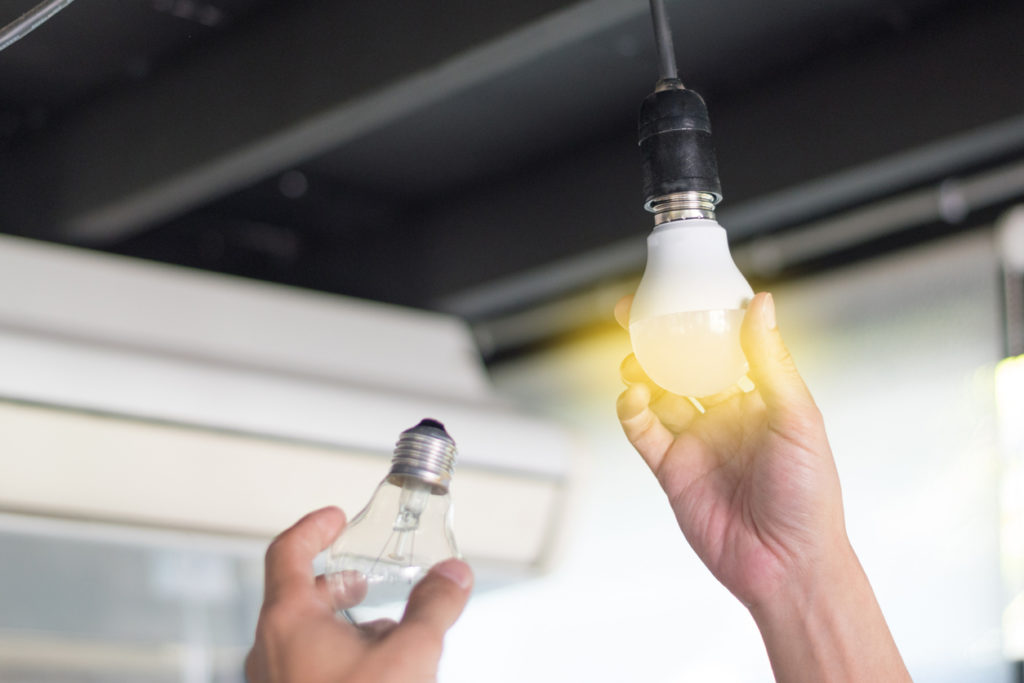Sometimes, when it comes to global warming, it’s easy to get overwhelmed and wonder what we can do as individuals to help or at least not cause any more harm. As an apartment dweller, there are many ways to conserve energy—and save money as well.
While much of the discussion about curbing global warming centers on oil and gas, the U.S. Energy Information Administration says residential and commercial buildings in the U.S. are responsible for 40 percent of all energy consumption. More than half of that applies to residential buildings of all types, including renter-occupied structures.
Just living in an apartment building helps conserve energy. People in apartment buildings with five or more units use half as much energy than the average for all households, according to the Energy Information Administration. Those in newer buildings use even less energy. The administration predicts that as older buildings are being replaced, energy use per household will continue to decline.

While part of the savings comes from smaller spaces in apartments as compared to stand-alone houses, having common walls and areas with fewer windows also helps lower energy costs.
Apartment dwellers can go green
But there are many ways to conserve electricity that those who live in apartments can do, while saving themselves some money, according to Energy Star, a program of the U.S. Environmental Protection Agency and U.S. Department of Energy, which sends these energy saving tips:
- Replacing your apartment’s five most frequently used light fixtures or bulbs with Energy Star models can save you $75 per year.
- Turning the thermostat back 7-10 degrees for eight hours a day can save up to 10 percent each year on heating and cooling bills.
- Getting maintenance to fix leaky faucets can save $35 and 1,661 gallons of water a year.
- Using a power strip for electronics and turning it off when not in use can save up to 12 percent of your electric bill a year, or about $100.
Yes, there are many ways to save on electric bills that homeowners can do to save energy that apartment renters cannot. Still, there are many things on the market and common-sense approaches to saving energy that can benefit those living in apartments, such as:
- Install a low-flow showerhead (if your HSL apartment doesn’t already have one) and keep the old showerhead so you can put it back in place when you move.
Also, consider fewer baths. A 10-minute shower can use less water than a full bath. With a new 2.5 gallon-per-minute (low-flow) showerhead, a 10-minute shower will use about 25 gallons of water, saving you five gallons of water over a typical bath.
Likewise, you can put aerators on other faucets to save water (don’t forget them when you move). - If your toilet isn’t low flow, fill a plastic bottle with gravel and put it in the tank. Remember to take it with you when you move out.
- Cover your windows with blackout or thermal curtains.
- Get some foam insulating gaskets to put behind outlets to reduce heat loss. Consult with your community maintenance team if you’re thinking about doing this.
- Save energy using the garbage disposal (and landfill space) by building your own compost box and storing it under the sink.
- Keep compressor coils on your fridge clean, which lowers your energy use (did you know a quarter of your electric bill can be used by your fridge?).
- Make sure your furniture isn’t blocking vents.
More apartment home energy saving tips
In the desert, you can “go solar” during our cool winter months by opening the blinds or drapes and letting the sun heat up your home. Then in summer, be sure to block out as much sun as possible to save on costs of cooling down your apartment. Likewise, if you have ceiling fans, make sure they’re on the right setting for the right season. The fan should push air down during warm months and draw it up during the winter, which regulates temperatures and gives proper air circulation. Saving energy can be a matter of changing your behaviors, as these tips to save electricity show:
- The fuller and tighter your freezer is, the better it keeps cold. Take all of your food out, then repack as tight as you can make it, using bags of ice or even newspapers to fill in spaces. Remember not to open the freezer too often. Each time you open it, it uses more energy to try to freeze all the warm air you’ve let in.
- Choose cold water to wash your clothes. Hey, over an Arizona summer, the cold water can get on the warm side, but at least it doesn’t use energy to get that way.
- As much as you can, air-dry your clothes inside your apartment on a drying rack. Tip: When you take your clothes out of the washer, shake them out to open up surface area, which allows it to dry faster If you’ve got a dryer in your unit, remember to keep the lint screen as clean as possible.
- Put a lid on it. Your pots and pans, we mean. Lids trap heat, which cuts down on the amount of time whatever’s inside the pot needs to heat up.



